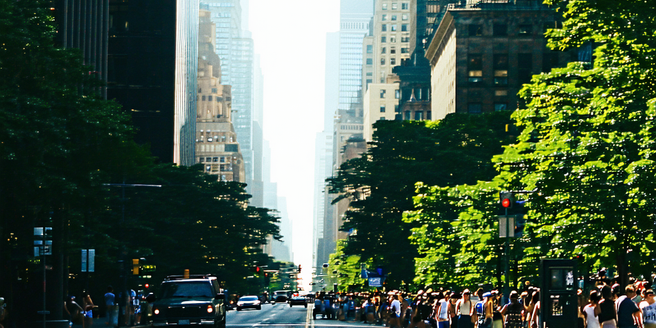
Understanding the Urban Heat Island Effect
Urban heat islands (UHIs) are areas in cities that experience higher temperatures than their rural surroundings due to human activities. The UHI effect results from the modification of land surfaces and the generation of waste heat from energy usage. This phenomenon exacerbates the urban temperatures, especially during the night, leading to increased energy consumption, elevated emissions of air pollutants, and impaired water quality. The material used in urban construction, such as asphalt and concrete, absorbs and retains heat. Vegetation loss further contributes to heat retention, reducing the natural cooling effects provided by plants. Understanding UHIs is crucial for city planning and implementing sustainable practices that mitigate climate change impacts. This knowledge helps in designing urban areas that are more resilient to the extreme effects of heat and shifting climate patterns.
Causes of Urban Heat Islands
Urban heat islands are primarily caused by the conversion of natural surfaces into urban landscapes. The replacement of trees and vegetation with concrete and asphalt leads to enhanced heat absorption and retention. Buildings and roads absorb more solar energy during the day and release it slowly at night, keeping urban areas warmer. Furthermore, the use of vehicles, industrial activities, and air conditioning releases additional heat into the urban atmosphere. Additionally, the lack of vegetation reduces the cooling effect typically provided by evapotranspiration. The design of city layouts can also affect airflow, trapping heat within urban canyons, and exacerbating the UHI effect. Addressing these causes requires integrated urban planning that emphasizes green spaces and sustainable infrastructure.
Impact on Local Climate and Health
Urban heat islands significantly impact local climate by increasing temperatures, especially in the summer months. This rise in temperature can alter local weather patterns, intensifying heat waves and making them more frequent. The increased heat poses severe health risks, particularly affecting vulnerable groups such as the elderly, children, and those with preexisting health conditions. It can lead to heat stress, heat exhaustion, and in extreme cases, heatstroke. Additionally, higher temperatures can exacerbate air pollution, including increased ground-level ozone, which causes respiratory problems. The UHI effect also strains water resources and increases demand for energy, especially for cooling, further contributing to greenhouse gas emissions. Understanding these impacts is essential for developing effective public health and environmental policies.
Mitigation Strategies for Urban Areas
To mitigate urban heat islands, cities can implement several strategies aimed at reducing heat absorption and enhancing cooling. Increasing urban green spaces, such as parks and gardens, and planting more trees can provide shade and promote evapotranspiration, reducing temperatures. Implementing green roofs and cool roofs with reflective materials can decrease heat absorption by buildings. Urban planning can incorporate improving airflow by designing cities with more open spaces and vegetation. Enhancing public transportation and promoting sustainable energy practices helps reduce waste heat emanating from vehicles and buildings. Additionally, community awareness programs can educate citizens about energy conservation and the benefits of green infrastructure. Collaborative efforts between policymakers, urban planners, and communities are essential for implementing effective mitigation strategies.
Future Implications and Global Perspectives
As global temperatures continue to rise, the urban heat island effect is projected to intensify, posing greater challenges to urban areas worldwide. Future implications include heightened energy demands for cooling, which can lead to increased greenhouse gas emissions if not managed sustainably. Global perspectives emphasize the need for cities to adapt to climate change through innovative and sustainable approaches. Lessons can be drawn from cities already implementing successful UHI mitigation strategies, serving as models for others. International cooperation and knowledge sharing are crucial in developing global standards for urban design that prioritize resilience and sustainability. Addressing UHIs will require comprehensive policies and investments in green technologies. As urbanization continues to expand, proactive measures are necessary to ensure cities remain livable and environmentally balanced.
